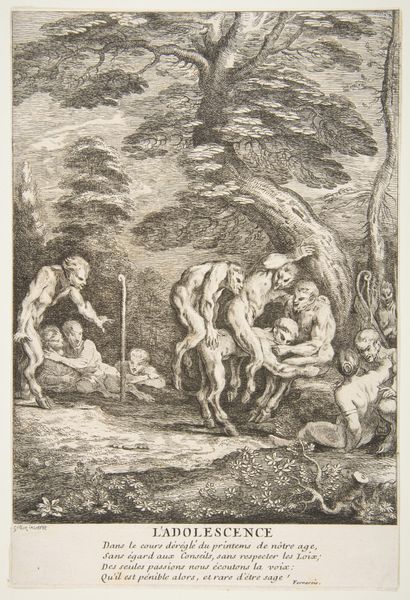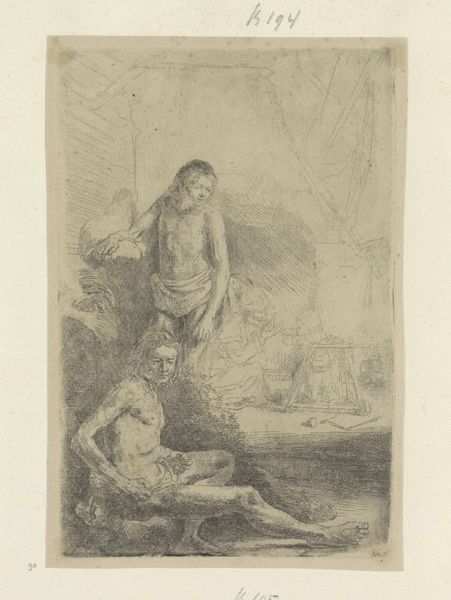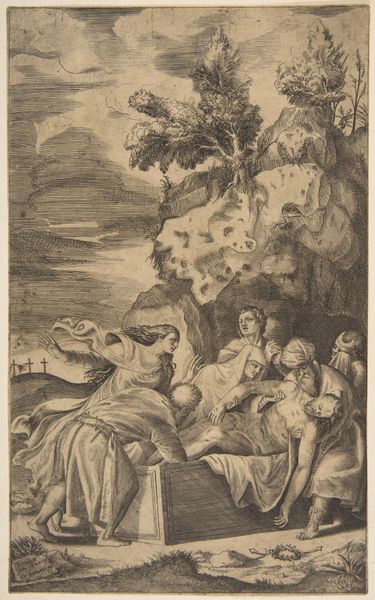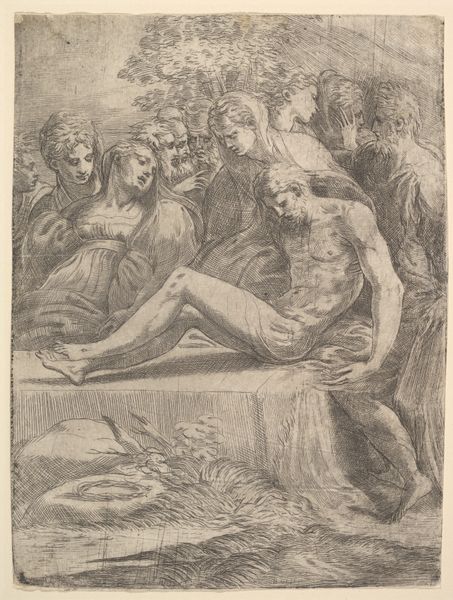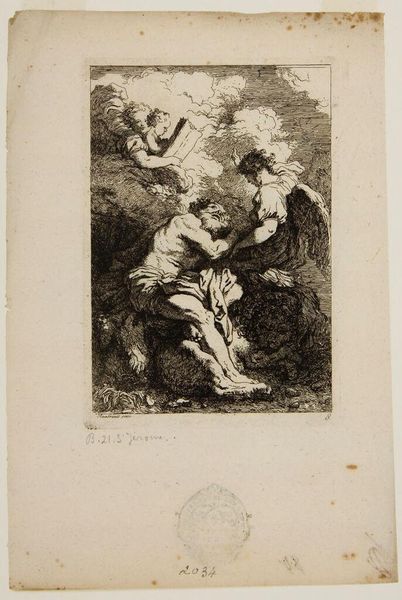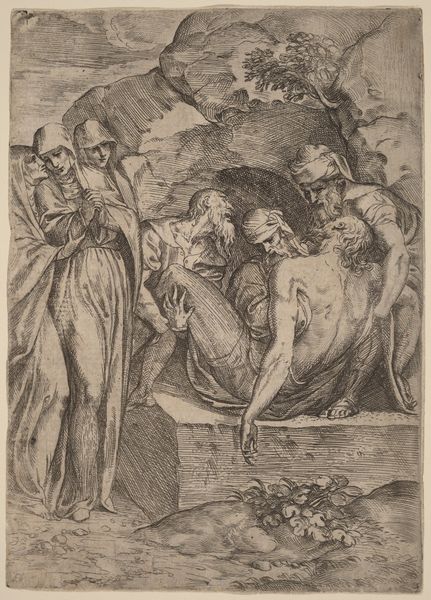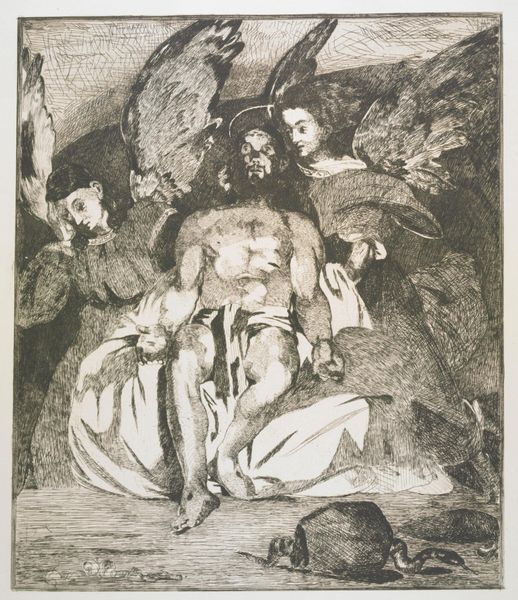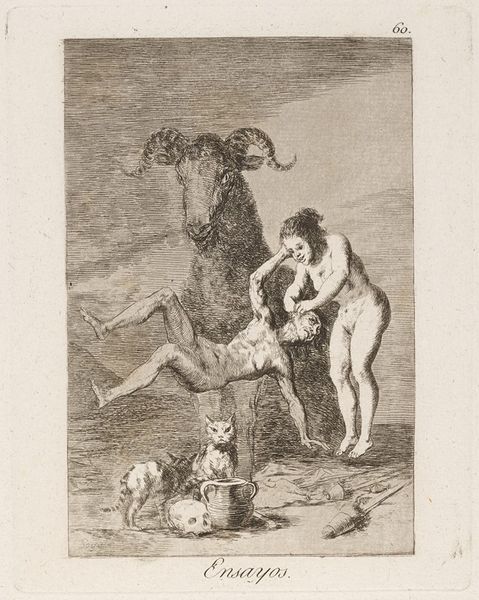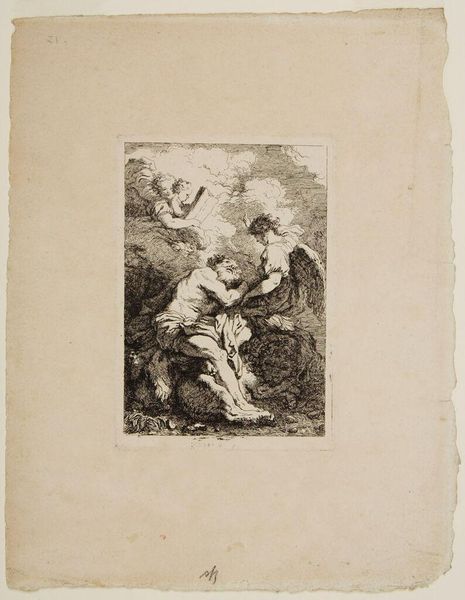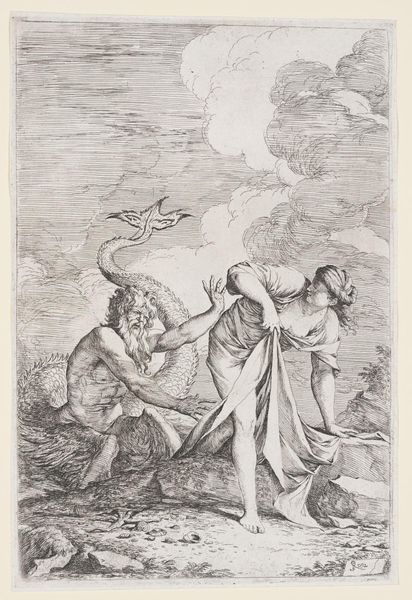
Copyright: Public Domain: Artvee
Curator: Goya's etching, "Sopla," created between 1796 and 1797, part of his "Los Caprichos" series, confronts us with an unsettling vision of societal ills. Editor: It's striking how the aquatint renders such darkness. The dense hatching, especially around the figures, creates a tangible sense of gloom. The composition seems to hinge on that beam emanating from the, shall we say, rear-end. Curator: Yes, quite. That central image, grotesque as it is, channels a long history of scatological humor as social commentary. The act, directing the foul blast into a brazier, evokes rituals of purification gone horribly awry, the title "Sopla", meaning "blow", implying a kind of perverted cleansing. Editor: The textures created with the etching technique further emphasize the ugliness and rawness. Observe how the linear quality highlights the subject’s physical grotesqueness; that rendering underscores his state, wouldn’t you agree? Curator: Precisely. Goya, living through turbulent times, employed such figures as a shorthand for decadence and corruption. The faces in the background are also illustrative, mere caricatures reflecting society’s hypocrisy. Goya masterfully utilizes dark humor to cast shadows on an era marked by profound societal shifts. Editor: Also, the figures form almost a vortex, focusing our attention—reluctantly perhaps—on the source of that beam, highlighting that moment. One can appreciate Goya's precise composition; it is masterful, if revolting. Curator: Indeed. Goya dares us to confront unpleasant truths. It remains relevant precisely because these issues continue to resonate, revealing the timeless nature of corruption and the grotesque aspects of humanity, captured within Goya's dramatic use of light and shadow. Editor: Looking again at how form communicates Goya's message, and that revolting scene becomes… I guess... perversely impressive? Thanks, Goya!
Comments
No comments
Be the first to comment and join the conversation on the ultimate creative platform.

